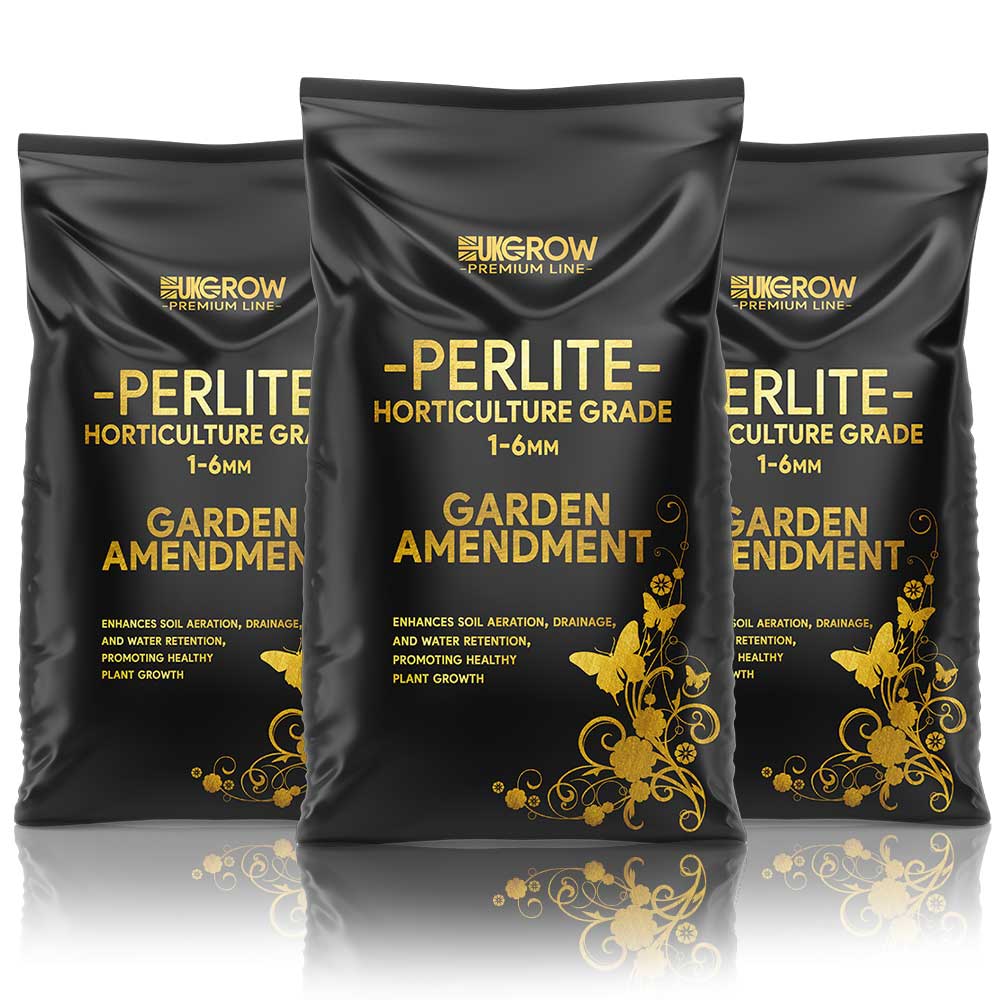Your basket is currently empty!

What is Perlite?
Perlite is a naturally occurring, volcanic glass that is heated to a high temperature of around 1600°F (871°C). This process causes it to expand, much like popcorn, resulting in a lightweight, porous material. Due to its unique properties, it has become a popular soil amendment in gardening and agriculture.

Benefits of Perlite in Garden Soil
Perlite offers several advantages when added to garden soil. Some of the key benefits include:
Improved Drainage
Perlite’s porous nature helps to improve soil drainage, reducing the risk of overwatering and root rot. This is particularly beneficial for plants that require well-draining soil, such as succulents and cacti.
Enhanced Aeration
The addition of perlite to soil increases aeration, allowing for better oxygen exchange between plant roots and the atmosphere. This is crucial for optimal root function and overall plant health.
Root Development
Perlite promotes healthy root development by providing a loose, well-aerated growing medium. This allows roots to grow and spread more easily, leading to stronger, more resilient plants.
Water Retention
Despite improving drainage, perlite also aids in water retention. Its porous structure absorbs and holds moisture, releasing it slowly to plants as needed. This can help to prevent rapid drying of the soil, especially in hot or dry climates.
Insulation
Perlite acts as a natural insulator, protecting plant roots from temperature extremes. This can be particularly helpful in colder climates or during seasonal temperature fluctuations.
Pest Resistance
Perlite is resistant to pests and diseases, reducing the likelihood of infestations in your garden. This can lead to healthier plants and a more successful growing season.

How to Add Perlite to Your Soil
Incorporating perlite into your garden soil is a straightforward process. Follow these steps to get started:
Step 1: Determine Soil Needs
Before adding perlite, assess your soil’s current condition. If it is heavy, compacted, or has poor drainage, perlite can help to improve its structure.
Step 2: Choose the Right Grade of Perlite
Perlite is available in various grades, with coarser grades providing better aeration and drainage. Choose a grade that best suits your soil and plant needs.
Step 3: Mix Perlite with Soil
Combine with your existing soil at a ratio of about 10-50% perlite to soil, depending on your specific requirements. For container gardening, a higher percentage of perlite is often recommended. However, for in-ground gardens, a lower percentage may be sufficient. Mix the materials thoroughly to ensure even distribution.
Step 4: Monitor Soil and Plant Health
After adding perlite to your soil, keep an eye on the health of your plants and the soil’s condition. If necessary, you can make adjustments by adding more perlite or other soil amendments.
Perlite vs. Other Soil Amendments
While perlite is an excellent soil amendment, there are other options available. Here’s how it compares to some common alternatives:
Vermiculite
Vermiculite is another expanded mineral, similar to perlite. However, it retains more water and doesn’t provide the same level of aeration. It’s best suited for plants that require higher moisture levels, while perlite is better for plants that need improved drainage.
Peat Moss
Peat moss is an organic material that improves soil structure and water retention. However, it doesn’t offer the same level of aeration as perlite and can become compacted over time. Additionally, peat moss is less sustainable. As it’s harvested from fragile ecosystems.
Coconut Coir
Coconut coir is a renewable, organic soil amendment made from coconut husks. It provides excellent water retention and aeration, but it doesn’t have the same insulating properties as perlite. Additionally, it may require additional nutrients to support optimal plant growth.
Precautions When Using
While perlite is a valuable soil amendment, there are some precautions to keep in mind:
- Always wear a mask when handling, as its fine particles can be irritating to the lungs.
- Be mindful of the environmental impact of perlite mining and transport, and consider using locally sourced alternatives when possible.
- Avoid using in windy areas, as its lightweight nature can cause it to blow away.
Conclusion
Adding perlite to your garden soil can significantly improve its structure, drainage, aeration, and overall health. By following the steps outlined in this article, you can enhance the growth and vitality of your plants, resulting in a more successful and enjoyable gardening experience.
FAQs
1. Can I use perlite as a standalone growing medium?
Yes, perlite can be used as a standalone growing medium, particularly for hydroponic systems. However, it may need to be supplemented with additional nutrients to support plant growth.
2. How often should I add perlite to my garden soil?
It’s generally not necessary to add perlite to your soil every year. Monitor your soil’s condition and adjust as needed, based on the health and requirements of your plants.
3. Is It safe for the environment?
Perlite is an inert, non-toxic material that is safe for plants, animals, and humans. However, the mining and transport of perlite can have environmental impacts, so it’s essential to consider the source and use locally available alternatives when possible.
4. Can perlite be reused?
Yes, it can be reused, particularly in container gardens or potting mixes. Before reusing, ensure it’s free of pests, diseases, and old plant material.
5. Can I use perlite in a raised bed garden?
Absolutely! It is an excellent addition to raised bed gardens, where it can help improve soil structure, drainage, and aeration.

UK Grow Perlite P35
Looking for a high-quality perlite that can improve soil drainage, aeration, and moisture retention for healthier plants? Look no further than our bags of perlite! Our perlite is carefully sourced and processed to ensure the highest quality and purity. It’s an essential tool for gardeners and houseplant enthusiasts who want to give their plants the best possible care. So why wait? Grab a bag of our perlite today and watch your plants thrive!

